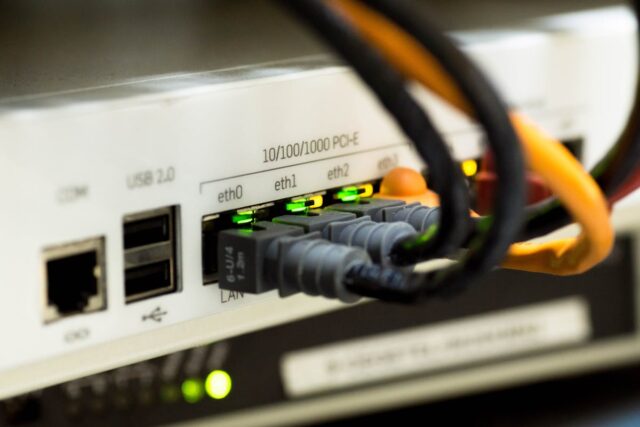In today’s rapidly advancing digital world, Narrowband Internet of Things Non-Terrestrial Network. The technology has immense potential to revolutionize connectivity in remote areas. By utilizing satellite-based systems, NB-IoT offers low-cost, reliable solutions for the Internet of Things (IoT) devices, even in areas where traditional networks struggle to reach.
What Is NB-IoT and How It Works in Non-Terrestrial Networks?
Defining Narrowband IoT (NB-IoT)
NB-IoT is a low-power wide-area network (LPWAN) technology designed to connect a massive number of IoT devices. It uses minimal bandwidth and consumes low power, making it ideal for applications requiring long battery life and broad coverage. NB-IoT operates on licensed frequency bands, ensuring reliable and secure IoT connectivity.
What Are Non-Terrestrial Networks (NTN)?
Non-terrestrial networks refer to communication networks that leverage satellites or aerial platforms instead of traditional terrestrial infrastructure. NTNs extend connectivity to unserved and underserved areas, including oceans, deserts, and mountainous regions.
How NB-IoT Integrates with Satellite Networks
The integration of NB-IoT with NTNs bridges the gap between urban and remote connectivity. Satellites enable IoT devices to communicate without the need for ground-based towers. This ensures global IoT coverage and consistent performance, regardless of the location.
Key Benefits of NB-IoT in Non-Terrestrial Networks
Global IoT Connectivity in Remote Areas
One of the biggest advantages of combining NB-IoT with NTNs is its ability to provide IoT satellite communication across the globe. This is particularly beneficial for industries operating in remote or rural areas, such as agriculture and mining.
Low Latency and High Reliability
Although satellite-based networks traditionally have higher latency, advancements in technology have minimized this issue. NB-IoT ensures low-latency communication for critical applications, such as remote monitoring.
Cost-Effective IoT Solutions for Hard-to-Reach Regions
By eliminating the need for extensive ground infrastructure, NB-IoT reduces deployment costs. This makes it a viable option for connecting IoT devices in geographically challenging regions.
| Feature | NB-IoT on Terrestrial Networks | NB-IoT on Non-Terrestrial Networks |
| Coverage Area | Limited to tower range | Global |
| Infrastructure Cost | High | Low |
| Power Consumption | Low | Low |
| Ideal Use Cases | Urban IoT, Smart Cities | Remote IoT, Maritime IoT |
Applications of NB-IoT in Non-Terrestrial Networks
IoT in Agriculture and Rural Development
Farmers in remote areas can utilize NB-IoT for precision farming. Applications include soil moisture monitoring, crop health tracking, and livestock management. This ensures optimized resource use and improved productivity.
Smart Cities and Infrastructure Monitoring
NB-IoT in NTNs plays a significant role in monitoring critical infrastructure in smart cities. It can track structural health, detect faults, and ensure safety in urban environments.
Aerospace and Defense Applications
The defense sector benefits from NB-IoT by enabling machine-to-machine (M2M) communication across vast territories. Satellites provide a secure and reliable channel for communication and asset tracking.
Challenges in Deploying NB-IoT NTN Solutions
Addressing IoT Network Latency Issues
While NTNs have reduced latency, some applications requiring real-time data transmission might face challenges. Continuous innovation is essential to mitigate these concerns.
Overcoming IoT Deployment Barriers in Remote Areas
Establishing NB-IoT systems in remote regions requires careful planning. Factors like satellite placement and device compatibility need to be addressed for seamless operation.
Ensuring Scalability and Security in Satellite IoT
Scalability is critical for future-proofing IoT networks. At the same time, robust security measures are essential to prevent unauthorized access to IoT satellite communication systems.
Future Trends of NB-IoT and Non-Terrestrial Networks
The Role of 5G in Expanding NB-IoT NTN Capabilities
The advent of 5G NTN promises enhanced bandwidth and reduced latency. This will make satellite-based IoT solutions more efficient and versatile.
Emerging Technologies Enhancing Satellite IoT
Innovations like low-earth orbit (LEO) satellites are transforming the IoT landscape. These satellites offer faster communication and higher data throughput for NB-IoT systems.
What Lies Ahead for IoT in Space-Based Networks
The future of narrowband Internet of Things non-terrestrial network looks promising. As technology advances, we can expect better connectivity, lower costs, and new use cases for IoT devices in remote and unconnected regions.
Frequently Asked Questions
1. What is the main purpose of NB-IoT in non-terrestrial networks?
NB-IoT in NTNs aims to provide reliable IoT connectivity in areas where traditional networks cannot reach, such as remote, rural, or maritime regions.
2. How does NB-IoT differ from other IoT technologies?
NB-IoT uses low-power, low-bandwidth communication optimized for devices requiring long battery life and broad coverage, unlike high-bandwidth solutions like LTE or 5G.
3. What industries benefit the most from NB-IoT and NTNs?
Industries such as agriculture, logistics, aerospace, and defense benefit significantly due to their need for connectivity in remote areas.
4. Can NB-IoT work without satellites?
Yes, NB-IoT can operate on terrestrial networks, but its integration with satellites ensures global coverage, especially in hard-to-reach locations.
By leveraging the synergy between Narrowband Internet of Things and non-terrestrial networks, industries can overcome connectivity barriers and unlock the full potential of IoT technology. As we look ahead, the expansion of narrowband Internet of Things non-terrestrial network in satellite-based systems will play a pivotal role in creating a more connected world.























